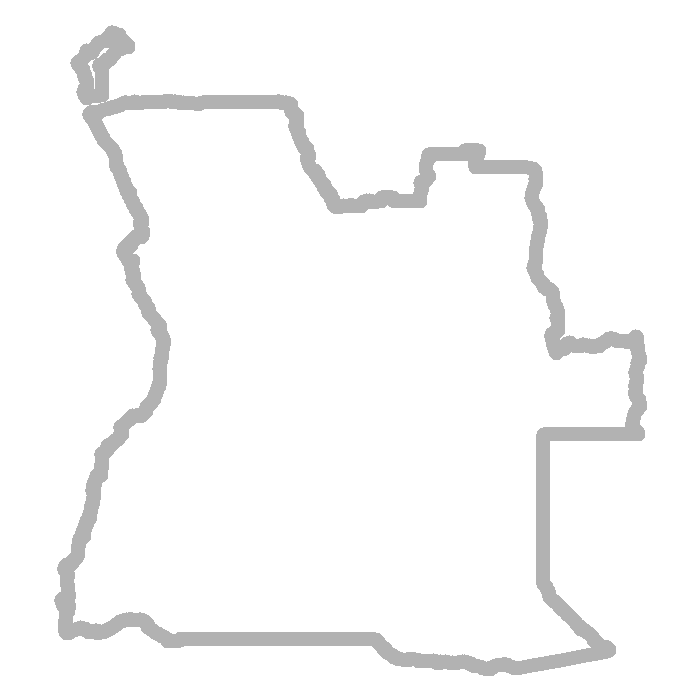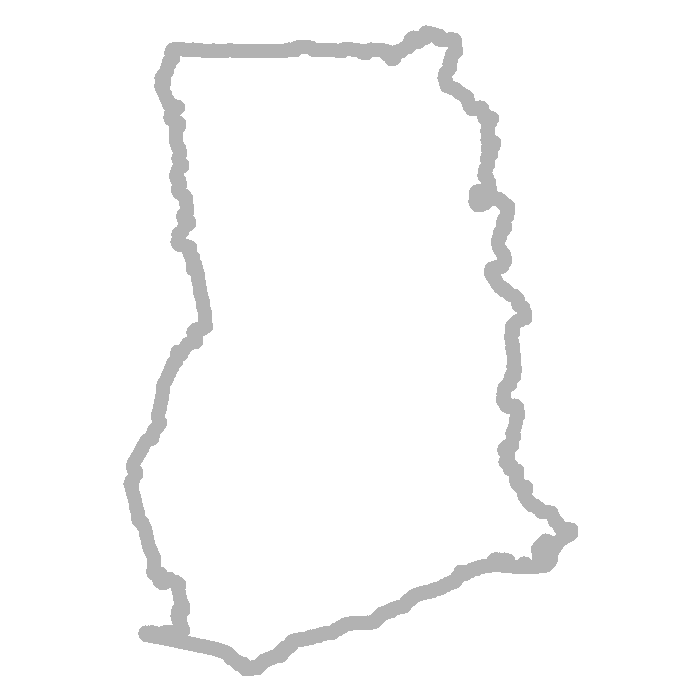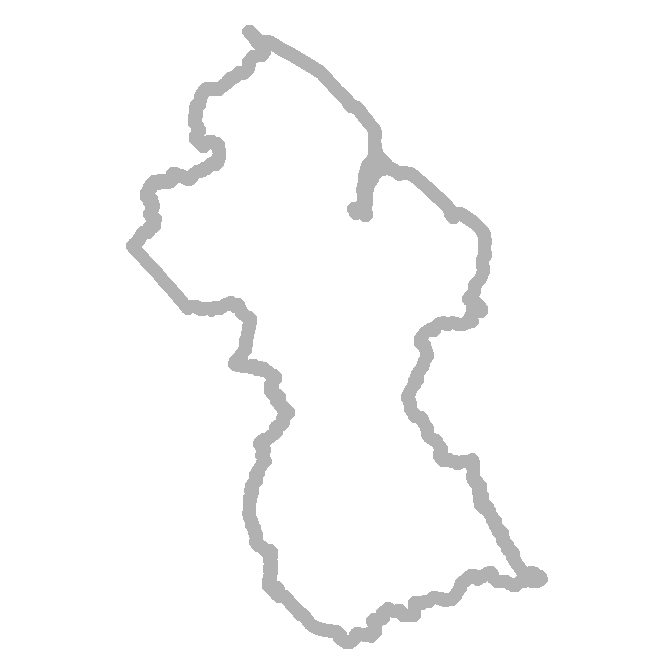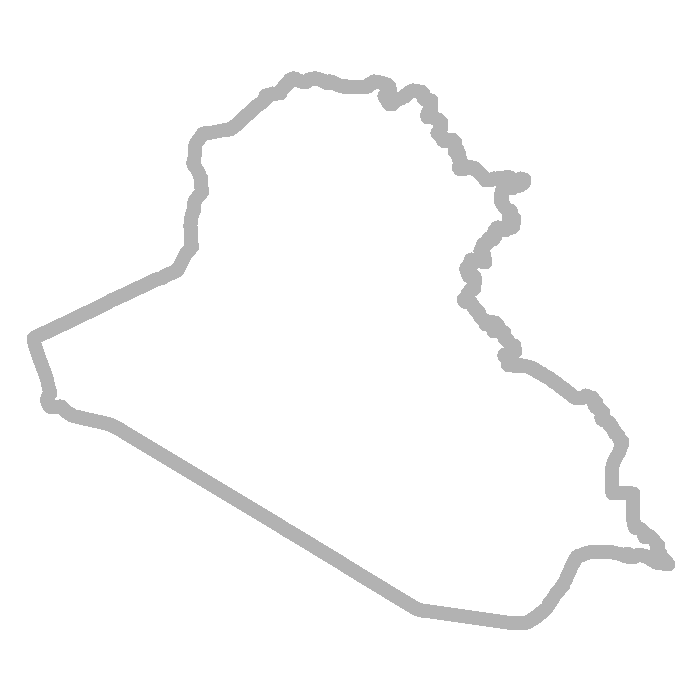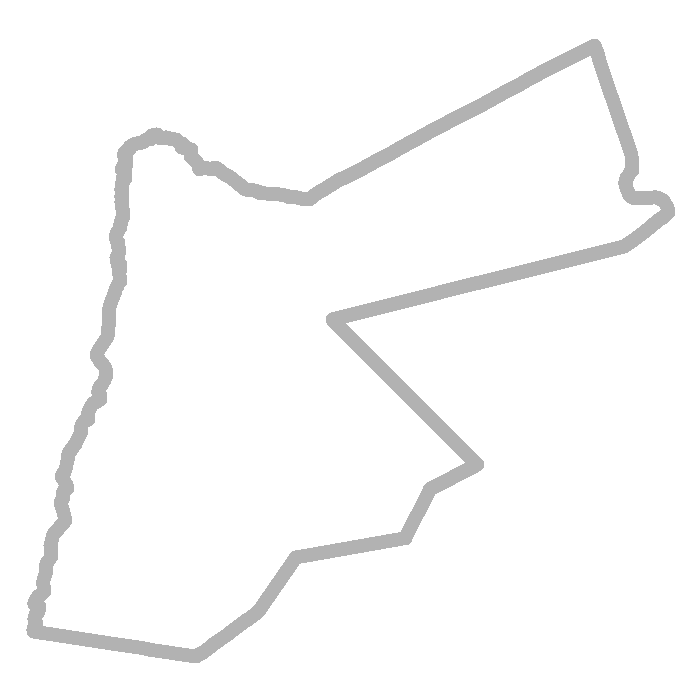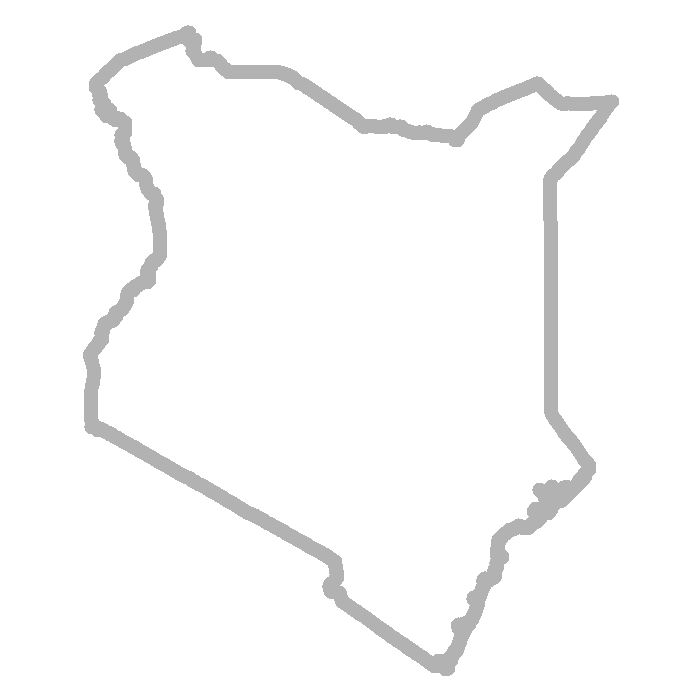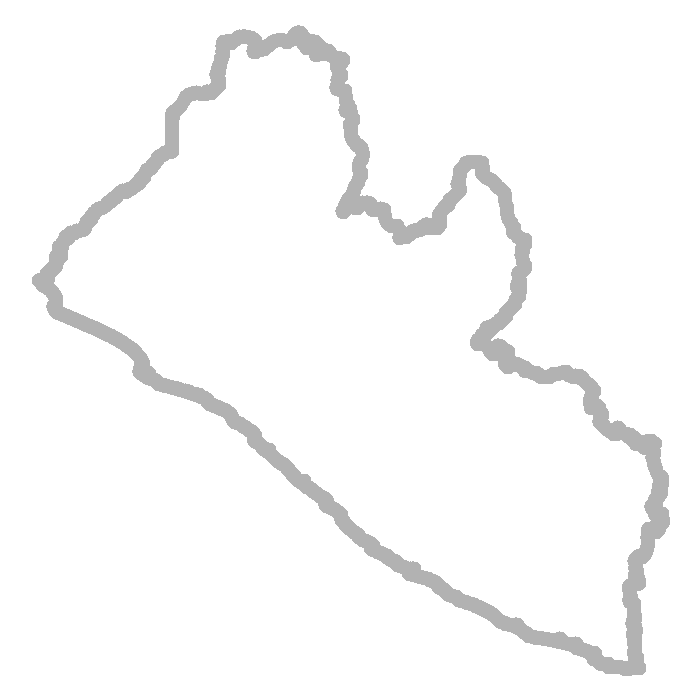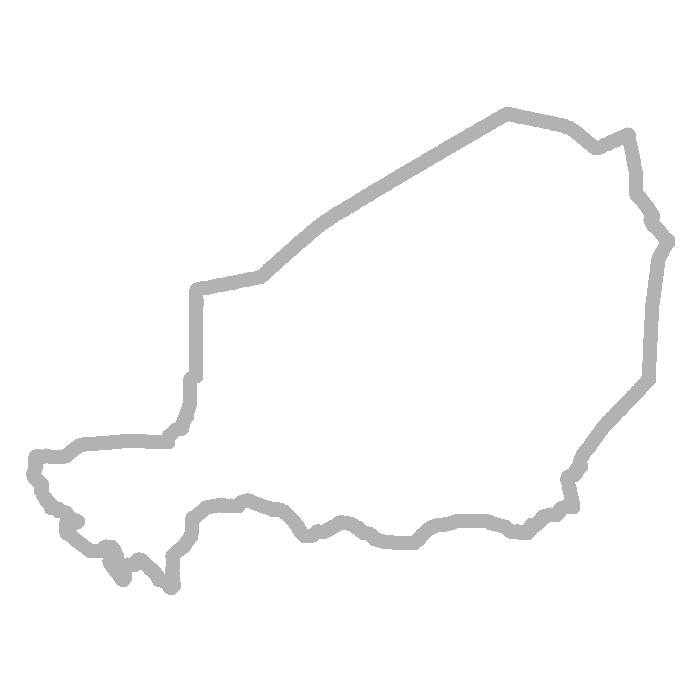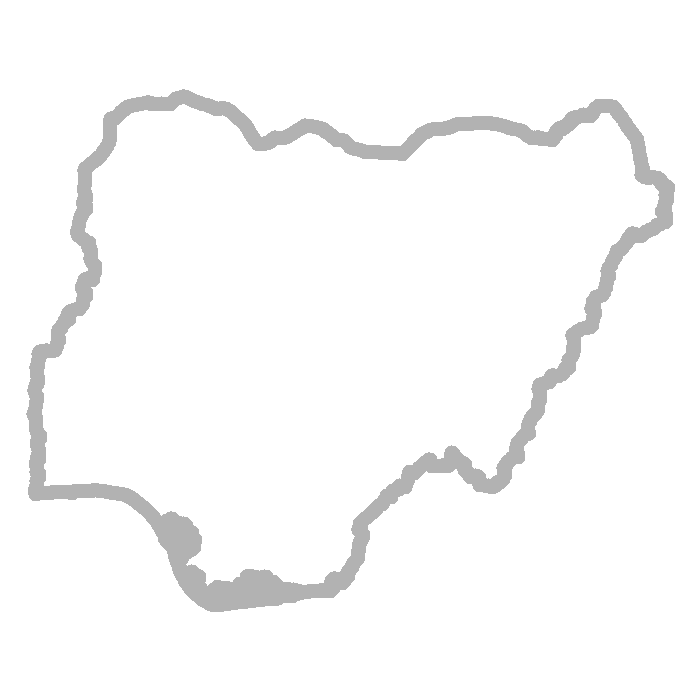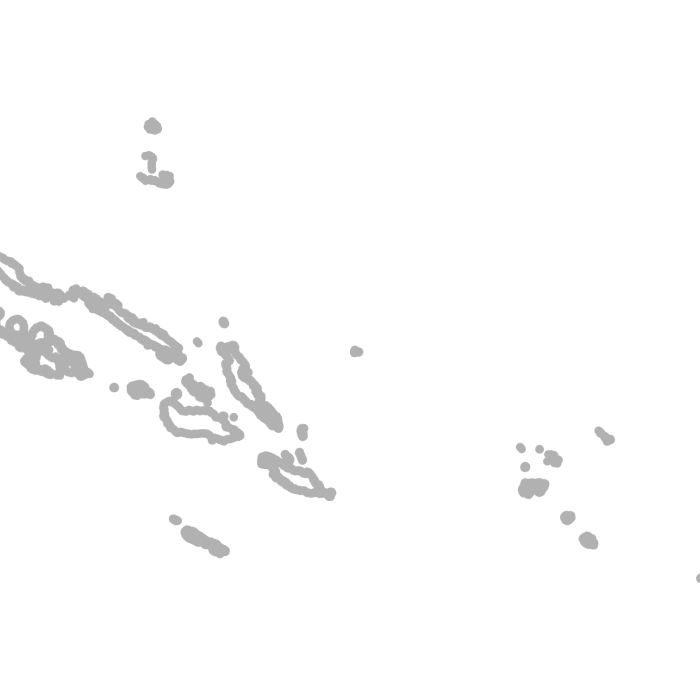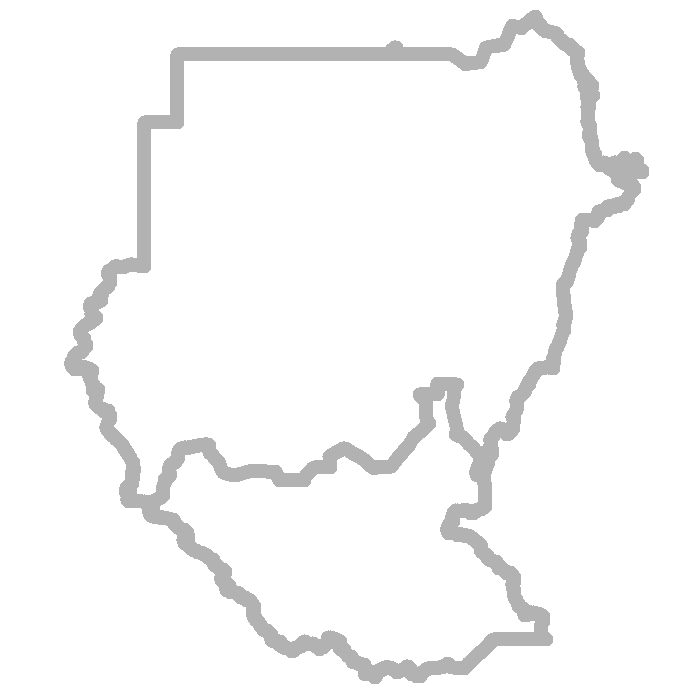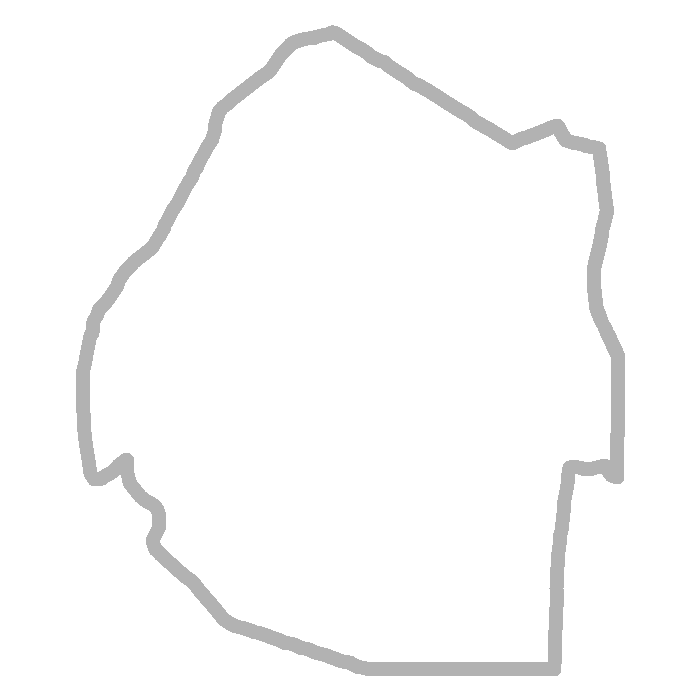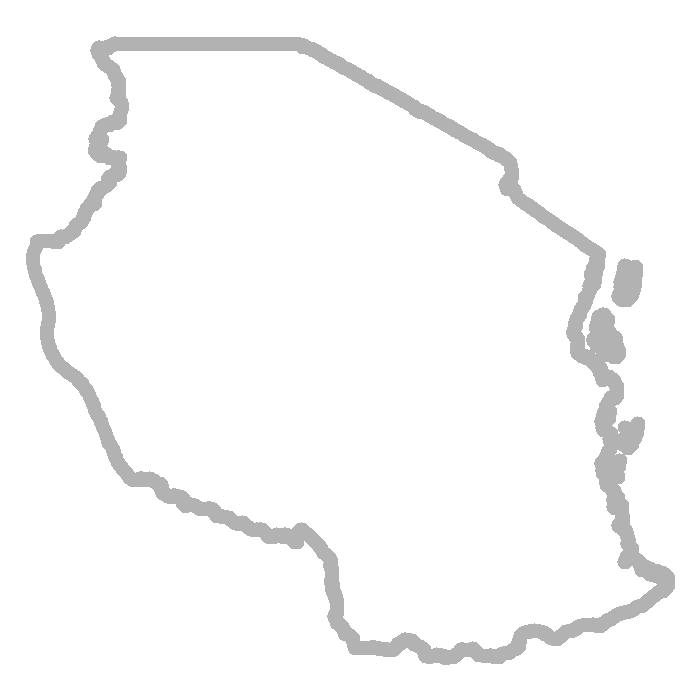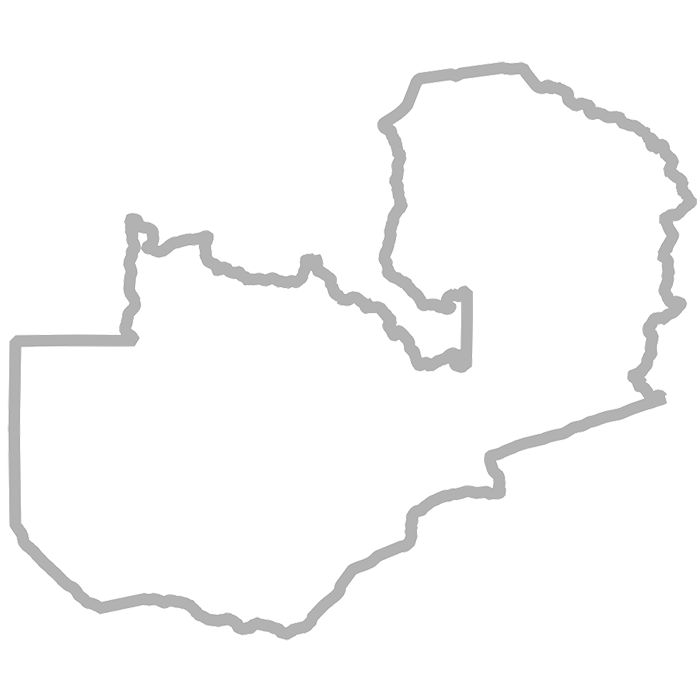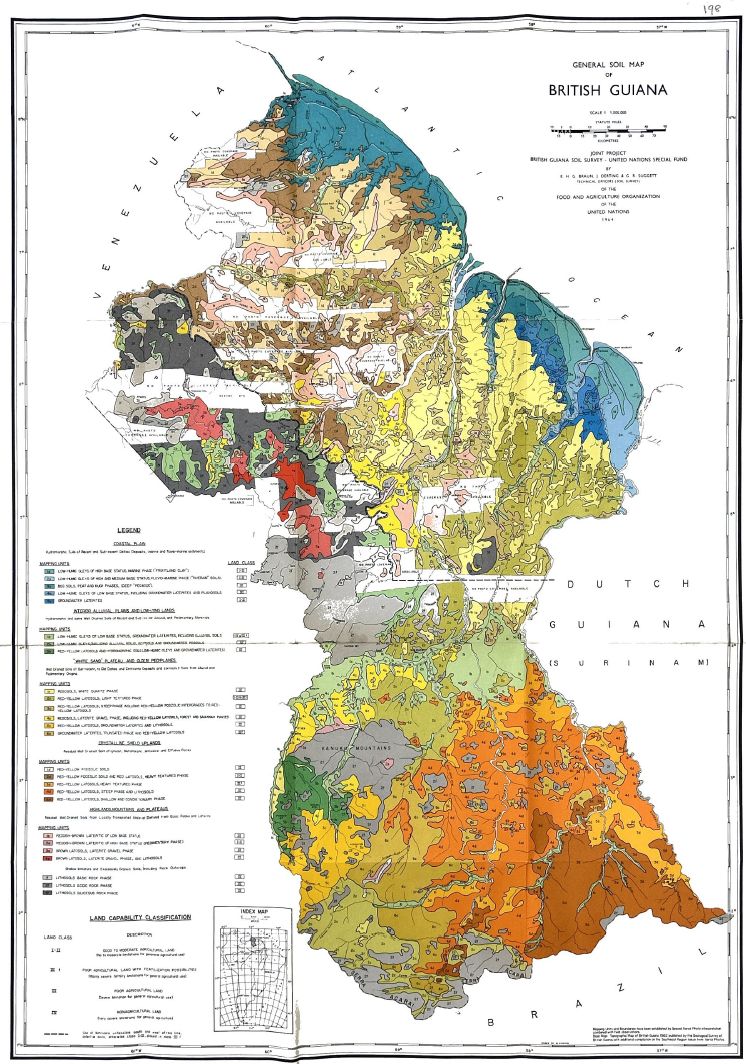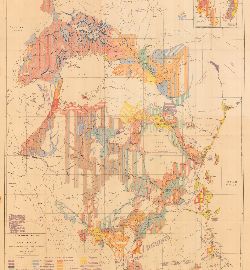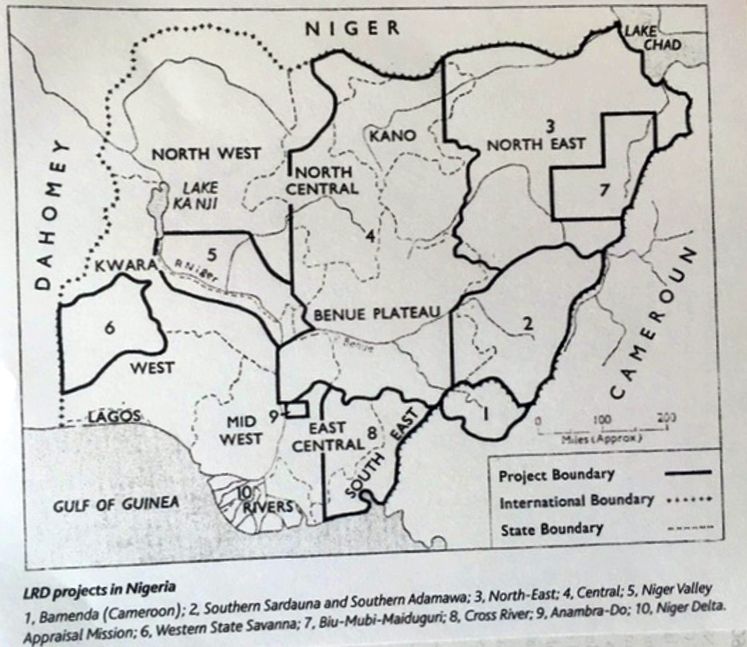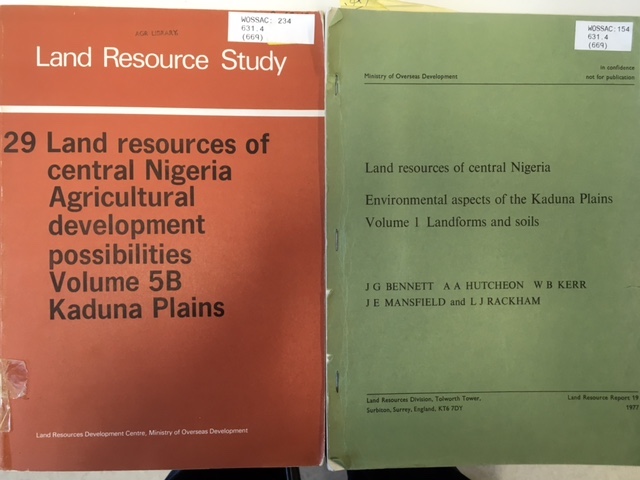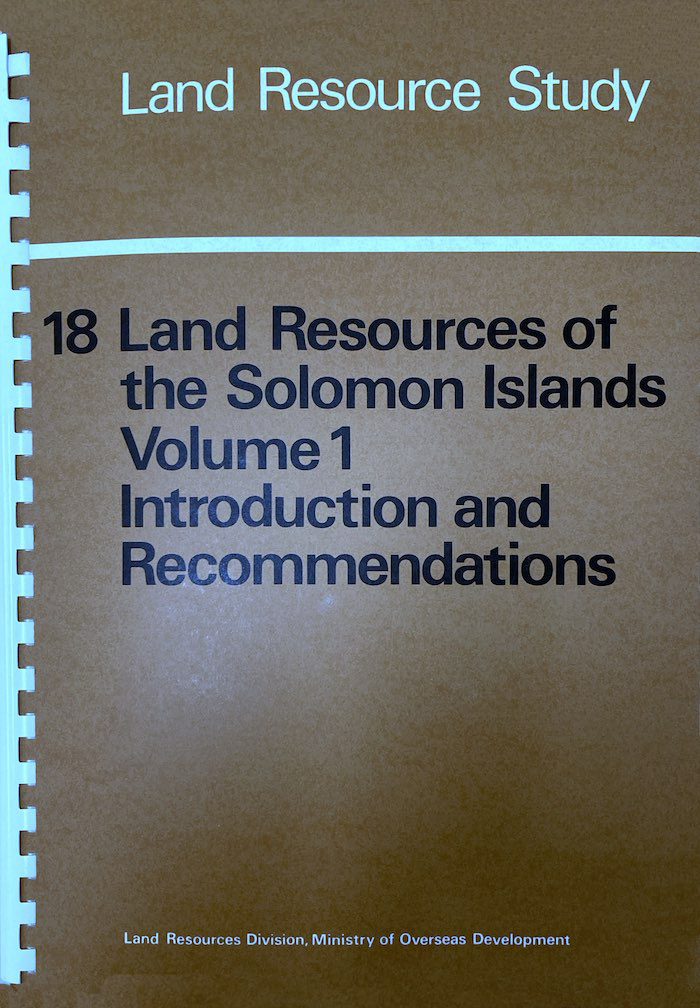Here is provided both a summary chronology of the numerous soil and land use surveys carried out in Tanzania over the period from the 1930's, and a series of profiles of Pioneer Tanzania Soil Scientists (1928-1970). The descriptions here are based on a number of key reference sources. The best introduction to early Land resource history in Tanzania is to be found within the excellent and authoritative book Thin on the Ground, Land Resource Survey in British Overseas Territories (Young, 2007; Young, 2018 2nd edition). Further to this, there is also an excellent account of the work of the work of the Land Resource Division (LRD), in Developing Countries (Makin et al., 2006).
This account is not meant to be an essay on the history of land resource assessment in the Country and is certainly not a comprehensive coverage of all the work. Rather it provides an introduction to the materials held within the WOSSAC archive, within a structured framework. This is important to the Tanzanian Case Study as it:
- Firstly sets into a chronology the surveys and reports. This allows individual reports to be linked as part of larger survey initiatives for example the work of the UK based Land Resources Division (LRD), in the Tabora area, and also traces the changing approaches and methodologies.
- Secondly, also points out the central role played by Tanzania in the development of soils and land use mapping not only in the East African region, but internationally. In order to provide a framework for this brief account the chronology has been sliced into a number of time periods which are useful for description, but are essentially arbitrary.
Materials for Tanzania held in WOSSAC may be retrieved via the website search tool - use the 'advanced text search' option and enter in Tanzania as the country to see the records.
The Colonial Surveys
The earliest record within the WOSSAC collection is a colonial document which describes a soil reconnaissance 1935 and 1936. These notes were made by Geoffrey Milne, an agricultural officer in Tanganyika (described more fully below), who became a one of the outstanding figures in soil science. His early records made during his travels in Tanganyika, provided the basis for his subsequent development of mapping soils in relation to the landscape and his concept of a soil catena which links soil development to the topography has provided the foundation for soil surveying since the 1930s. In Tanzania this relationship of soils and topography was being utilised in soil mapping up until the 1960s when a soil association and topography map was published by Scott (see below). This catena concept was essentially constructed during field work Milne and others conducted in Tanganyika, and reflects the understanding these early surveyors brought to field work. They utilised the very local, indigenous but sophisticated soil classification of farmers who had an intimate knowledge of soils which was based on topography. Milne‚s initial ideas are set out in a paper published in 1947 in the Journal of Ecology. Milne was also the primary author for the ambitious 1936 Provisional Soil Map of east Africa at a scale of 1:2 million, which covered Kenya, Uganda, Tanganyika and Zanzibar (held in WOSSAC - Tanzania File WOSSAC#42187). He also published notable summary papers which are held in the WOSSAC archive (Milne, 1935, 1937; 1938a; 1938b) By the 1950s Tanzania was producing national soil survey maps at a scale of 1:3 million.
Another area where Tanzania contributed pioneering studies was in ethnopedology, and Morsion (1948) following the pioneering work of Milne produced one of the first and best soil surveys that took detailed account of farmers' perceptions of soils and their management, and included a description of the indigenous Sukuma system of soil classification.
The other fundamental principle which contributed to the development of the study of soils and which was also rooted in the colonial experience in Tanganyika was the failure of the ambitious East African Groundnut Scheme immediately after World War II. This embarrassing experience which failed to produce any meaningful quantities of groundnuts, which were to be used for precious edible oils in the period of post war shortage in Britain, was to influence how all subsequent commercial agricultural schemes in Africa were planned. Sites considered to be suitable for groundnuts were identified in 1946, but multiple problems including unreliable rainfall and most importantly the largely infertile soils which also had the problem of being stony and difficult to cultivate with machinery, led to the collapse of this ambitious endeavour. The failure of this scheme, abandoned by 1949, implanted the requirement for rigorous land assessments before embarking on any agricultural scheme into the thinking of all subsequent planners and boosted the status of soil surveys and also evaluation in the decades which followed. One outcome from this initiative however is a Survey of the Soils in the Kongwa and Nachingwea Districts published in 1957.
As early example of the importance of land evaluation is provided by the work of the surveys charged with mapping the proposed route of the Central Africa Rail link during the early 1950s, which is also held in the WOSSAC papers. The value of soil investigations was now firmly established in the mindset of the colonial officials and funds were found for remarkably comprehensive national reconnaissance surveys in this period. W.E. Calton produced An Experimental Pedological Map of Tanganyika (scale 1:4m) in 1954, based on Geoffrey Milne's 1936 East African Soil Map of East Africa (WOSSAC File tbc.) with revisions in light of recent work done by C.G.T. Morison, B. Anderson, A.M. M. Spurr and the Staff of the Soil Chemists Department. There was in addition a reconnaissance level survey of the Rufiji Basin in 1961 which deserved inclusion in this category of reconnaissance mapping. In 1956, the Survey Division of the Department of Lands and Surveys produced an ‘Atlas of East Africa - Tanganyika’ including in its Physical Section maps for the themes Physiographical, Physical, Geological and Soil.
Post-Independence Soil Mapping
An important contribution to soils and land resources work in Tanzania was made by two early agricultural scientists both called Anderson, who began work prior to independence but published maps and reports post 1961. Brian Anderson was appointed as an Analytical Chemist for the Research Section of the Groundnut Scheme in 1947. He commenced his soil survey activities in 1951 conducting local surveys throughout the county. He was joined in 1958 by Gordon Anderson. Using Milne's reconnaissance map as a basis the two slowly increased the knowledge base via a series of local surveys throughout the country. In 1963, Brian Anderson produced, Soils of Tanzania. Ministry of Agriculture Bulletin No. 16, and in 1967 Gordon Anderson produced a further refinement of the Soils Map of Tanzania in the 4th Edition of the Tanzania Atlas. Also during this important period for land resource work, R.M. Scott produced a Soil Topography Association Map in 1963. Soils information compiled by the Andersons and their colleagues provided the country input to the Soil Map of Africa published by the Inter-African Pedological Service under the direction of J.L. D'Hoore in 1967. This use an international classification system based on soil physical and chemical characteristics.
Following Independence in 1961, the new Government commissioned a number of surveys such as the Lower Mgeta survey of 1965, funded by the UK Ministry of Overseas Development (ODA). These surveys typically encompassed the complete spectrum of natural resources including soils, and vegetation, land use and forestry. The aim of such surveys was to stimulate regional or district level development through integrated programmes and the mapping of the resources was viewed as a foundation for any planned developmental initiatives.
In 1967, the Food and Agriculture Organisation seconded Robert Baker to the Tanzanian Ministry of Agriculture, Food and Cooperatives as Senior Soil Surveyor and provided the funds to undertake a full reconnaissance soil survey of the entire county. The country was divided into four quadrants with a team of surveyors placed at a research institution in each quarter. The field survey commenced in September 1967 and was completed in July 1969. These four reports formed the basis for R.M. Baker's ‘The Soils of Tanzania’ which was published by FAO in 1970. This report is not held in WOSSAC but three of the four field survey reports ares.
Much later the work of the Land Resources Division, (LRD) an agency of the UK government, produced a great volume of land resource material for the Tabora region and Mtwara/Lindi regions, during the late 1970s and 1980s. These surveys which were carried out large teams of expatriate and local surveyors typically produced soils and land use information, but extended this to generate village planning, and farm management level documents. These surveys provide valuable insights into specific areas in great detail. However the expense and manpower involved in these very detailed assessments began to be questioned and this era of surveys is now consigned to the historical record. By 1980 the focus was again of central planning and the ambitious, Soil Atlas of Tanzania includes 49 map sheets at a variety of scales. This edition of the atlas was published in 1983 by S.A. Hathout. This is a valuable edition as the atlas includes the earlier maps of Milne, Scott, and Carlton and the Andersons.
This phase of externally resourced and executed land resources surveys produced an interesting international comparison of methodologies in the coastal regions, with the British mapping the south, the Canadians the centre, and the Germans the north. All three were high quality efforts and are compatible.
Thematic Assessments
Parallel to these large scale surveys were a number of thematic assessments designed to provide limited information or the suitability of land for a specific undertaking, and carried out in the period from 1960 to the late 1980s. A significant number of these surveys have been archived within WOSSAC. The earlier experience of the Groundnut Scheme had underlined the need for this detailed information to prevent over ambitious commercial agricultural investment in the absence of proper surveys. Surveys for Sisal production (Kwamdulu); tea estates (Bulwa and Mufindi (a project undertaken by Silsoe College staff from Cranfield University); Navy Beans (Maramba); cocoa (Maramba); and cotton (Rufiji Basin) are typical of these surveys at a variety of scales often less than 1:50,000. There are multiple surveys to encourage the tea industry in southern Tanzania at this time for example.
Other specific examples of land assessments are early surveys to understand the unique nature of the Tanzanian wildlife areas. Surveys of the Serengeti Plains (1965); Ngorangoro Crater (1973); and the Mkomazi Game Reserve (1967), are archived. There are also later documents relating to the resources of the Serengeti plains produced in 1992.
River Basin and Forestry Resource Assessments
The archive holds material from an early assessment of the Rufiji Basin from 1961 and this was followed by evaluations of the Pangani (1962), the Kagera basin (1976), which also contains useful material on Rwanda; and the Maharunga drainage basin in 1977. A decade later this fashion for Master plans using river valleys as the unit of survey was renewed and in 1988 the Tango Master Plan study was produced, with accompanying sets of maps.
Concern over environmental pressures and the supply of fuel wood also led to surveys being commissioned which evaluated the Catchment Forests of the Eastern Arc Mountains and also the Pare Mountains in the 1990s.
National Land Cover Mapping
The most recent comprehensive assessment was the ambitious Tanzania land Cover Mapping Project carried out by Hunting Technical Services for the Government of Tanzania in the late 1990s. This satellite based assessment with rigorous ground checking resulted in map sheets at a scale of 1:250,000, and the archive holds over 50 map sheets from this survey. Parallel to this national effort there also exists the results of a National Reconnaissance Level Land Use and Natural Resources Project, completed in 1997, for which documents are archived.
Natural Resource Surveys in Zanzibar and Pemba
Unsurprisingly, the documents held for these two islands mirror the natural resources work carried out on the mainland. In the late 1940s soil surveys were carried out by W. E. Carlton who conducted a reconnaissance soils survey of of both Zanzibar and Pemba and in 1954 published a simplified map of both islands. A land evaluation of both islands, commissioned by FAO, Evaluation of Land Resources in Zanzibar, reports published in 1990 are a comprehensive record of the main island. One further report by HTS in 1994 addressing the need for an Integrated Environmental Management Project completes the collection.
The Beginnings for Land Information Systems in Tanzania
There has been a history in Tanzania of attempts to centralise and consolidate land resource documents, including materials which reach back to the 1960s when scientists at the University of Dar es Salaam set up the Bureau of Resource Assessment and Land Use Planning (BRALUP). This effort was supported by international donors including the UK Overseas Development Administration and staff was seconded to Tanzania from the Land Resources Division. One significant output from this centre of excellence was the Rukwa Project, the final report for which is archived.
The Bureau later was re-launched as the Institute for Resource Assessment (IRA) and this agency is now the home of the Tanzanian Resource Information Centre (TANRIC), which has at its core the Tanzania Resource Information System (TANRIS).
The Tanzanian Natural Resources Information Centre (TANRIC)
In the early 1990s, much of the existing information on land use, natural resources and environmental degradation in Tanzania was out of date, general in nature, at small scale, and scatterd in coverage. Against this background a Tanzanian Tropical Forest Action Plan (TFAP) was established and, in 1991, the Forest Resources Management Project (FRMP) was initiated with funding provided by the World Bank. The Tanzanian Natural Resources Information Centre (TANRIC) was proposed as a component of FRMP and The Institute of Resource Assessment (IRA), University of Dar es Salaam, was selected to house the Centre.
Under World Bank Project IDA CR2335-TA, the Cranfield University Soil Survey and Land Research Centre (now incorporated in the National Soil Resources Institute (NSRI), was contracted (1994-97) to develop TANRIS in close consultation with the IRA and the Forest Resources Management Centre, of which TANRIC is a part. The IRA is located at the University of Dar es Salaam and the aim of TANRIC was to establish an information base on resources, land-use and environmental conditions in Tanzania, capable to assist with development planning, resources management and environmental monitoring.
Another component of FRMP, closely related to TANRIC, is the National Reconnaissance Level Land Use and Natural Resources Mapping Project undertaken by Hunting Technical Services Ltd. (HTS), UK. This project produced a total of 64 maps, at a scale of 1:250,000, based on Satellite imagery 1994-96. The maps show general classes of land use (forest cover, agricultural land, grazing and settlement) and were available for deposit at TANRIC in April 1997.
The objectives of TANRIC were to collect and organise both point and spatial data on natural resources and the environment, to develop a computerised Information System to store, manipulate, retrieve and maintain such data, to act as a repository for publications on the natural environment for Tanzania, and to make natural resources information available to policy makers and other users.
The three major components of information management by the Centre had been established by 1997:
- TANRIS the Tanzania Natural Resources Information System, a PC-based system for the storage and retrieval of relationally structured data;
- TANRIC GIS, a Geographical Information System (GIS) for the digitisation, processing, storage and manipulation of geographic (spatial) data; and
- TANRIC Reference Library of reports and books, including a Map Collection, about the natural resources of Tanzania'.
Data at TANRIC were organised into a number of broad categories - climate, forestry, infrastructure, population, soil, vegetation, water and wildlife; data for other categories such as archaeology, crops, fish/marine life and livestock were considered to be appropriate for addition later (than 1997).
On completion of the 1994-7 contract, TANRIS contained natural resource information together with software to query, update the data and produce reports. Six modules constituted the system: Metadatabase, Bibliography, Population, Expertise Profile, Meteorology and GIS Catalogue. A wide range of projects had been completed at the Centre during the short period that the GIS had been operational. These included: a population study of Dar es Salaam; Agro-economic zones; Rainfall and Soils for Tanzania; water resources in the Ngorongoro Conservation Area; and vegetation changes in the Pugu and Kazimzumbwi forest.
Profiles of Pioneer Tanzania Soil Scientists (1928-1970)
Early Tanganyika (now Tanzania) land development experience resulted in at least two advances in applied soil science that have been of benefit to soil scientists around the World. One was Geoffrey Milne’s formulation of the Catena as a Soil Association Mapping Unit and the other was the British Governments attempt to launch a major agriculture project - The Groundnut Scheme - without the benefit of any formal knowledge of the land resources of the areas selected . The former provided pedologists with a new tool in their skills box while the latter led to a programme of soil surveys throughout the world as a precursor to the funding of the majority of donor aided rural development projects.
In the British Colonial Service, the earliest soil scientists appointed to posts were called Chemist, Agricultural Chemist or Soil Chemist, their preliminary task being to analysis soil as a basis for fertiliser recommendations. A few of these chemists realised that if soil management and agricultural extension in general, were to be done other than on a farm-by-farm basis, then “a broader understanding of the nation’s land resource was required” . It was through some of the early Soil Chemists turning their hand to soil survey that began the work catalogued in the WOSSAC Archive.
In Tanganyika, the first soil chemist to address this task was Geoffrey Milne, a Soil Chemist based at the East African Agricultural Research Station at Amani. The Station was established by the German Colonial Administration in 1902 to undertake systematic test of indigenous and exotic tree species, and was known as the Biological Agricultural Research Station. This work continued under the British Government when it took over the administration of the country after World War One. In 1927-28, the Station was reconstructed and renamed the East African Agricultural Research Station. The research programme drawn up by the Station Director in 1927 included, among other soil related tasks “Surveys: The study of the basic types of East African soils, their characteristics, formation, distribution, and variation in relation to climatic and other influences. This work to be contributory to and correlated with the projected African soil Survey” . This apparently was a product of the 1927 Imperial Agriculture Research Conference at which Sir John Russell presented a paper on “A Proposed Soil Survey of those parts of Africa associated with the British Empire.” Having stated the need for describing and mapping the soils of countries where agricultural developments are in progress, Sir John added, “It has repeatedly happened that projects undertaken without sufficient knowledge of the soil have led to disappointment, much of which might have been avoided”. This intervention led to the establishment of the Imperial Bureau of Soil Science (IBSS) which had a brief to - among others - of “cooperating in the organisation of soil surveys within the Empire”.
It seems that the advice of Sir John Russell and the expertise of the IBSS were overlooked in the haste to develop the Groundnut Scheme in 1946, the primary purpose of which was to increase the availability of vegetable oil for the UK through the large-scale mechanised production of groundnuts. However, the failure of this project resulted in a worldwide effort to map the soil resources in advance of any agricultural development projects. While the failure was not alone due to the soil and climate characteristics of the chosen sites , these were an important factor, particularly the selection of the Central Province site at Kongwa. Kongwa was chosen as the first of the three locations to be developed. Arthur Bunting was appointed as Chief Scientific Officer and arrived in Tanganyika in January 1947, and started setting up his Scientific Department at Kongwa. When recruited Bunting asked John Wakefield , the leader the team that selected of the three project areas, what information was available. He was told by Wakefield that no basic information was available and that none of the team, including himself, “knew enough to judge which area was best”. “It’s your job to find any information you need,” he told Bunting . This seems inexplicable. Though Milne was no longer alive, Wakefield personally knew him and his soil survey reports , though he may not have been aware of Vageler or earlier travellers and their comments on the Kongwa area soils and climate, or that in the WaGogo vernacular Kongwa meant “the land of perpetual drought“ . Thus, it seems that while there was valuable soil information available to the Groundnut Scheme planners, it was not provided.
Bunting recruited Peter LeMare (whom he had earlier worked with at Rothamsted) as the Soil Chemist and Brian Anderson (as Analytical Chemist with Shadrack Tomi as his Laboratory Technician) to lead the soil investigation. When in 1951, it became clear that the scheme could not continue Arthur Bunting left Kongwa. The rest of his team stayed until 1952 when the Scientific Department was closed. Some of the research staff (including Brian Anderson) transferred to Government Service, while others went elsewhere. Peter LeMare joined the Empire Cotton Growing Corporation and was posted to the ECGC Research Station at Namulonge in Uganda. However, he was also in charge of the ECGC soil research at Ukiriguru and thus spent one quarter of his time there until about 1956 when Adriel Kabaara took over the Ukiriguru work. In 1963, the two switched places, with LeMare returning to Tanzania and Kabarra moving to Uganda. LeMare left Tanzania in 1969 when he resigned from the ECGC and took up a position at Reading University.
Paul W.E.Vageler (1892 - 1963)
Vageler was an agricultural scientist, who in 1910 became Privatdozent at the University Königsberg in East Prussia, Germany (now Russian Federation). In 1909 and 1911, he undertook expeditions in German East Africa as well as an expedition to Namibia. He wrote a book, entitled An introduction to tropical soils, Macmillan, (1933) . Geoffrey Milne refers to the contribution of Vageler in his soil survey work in East Africa.
Geoffrey Milne (1898 - 1941)
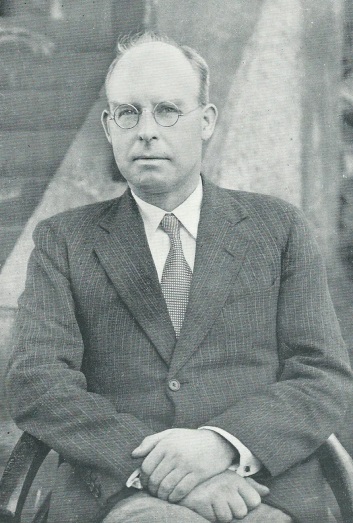
Geoffrey Milne was posted to the East African Agricultural Research Station at Amani as a Soil Chemist in 1928, with, among other tasks, responsibility for organising and carrying out a soil survey of the four East African Provinces (Tanganyika, Zanzibar, Kenya and Uganda . Milne came to East Africa with a background of: a 1st Class hon. BSc Chemistry 1921 & MSc Chemistry 1924 from the University of Leeds, some 5 years’ experience as a lecturer in Agriculture Chemistry, and 4 years as a member of the Ministry of Agriculture Soil Survey Committee during which time he was also an adviser to county agricultural staffs and particularly concerned with the Soil Survey of the Vale of York . Apparently, he had an exceptional talent as a research scientist and the ability to attract the collaboration of others interested in the fields related to agriculture, botany and geography. These included Clement Gilman , Bernard Burtt .
While his main task was to contributory to and correlated with the projected East African Soil Survey, he was occasionally asked for his recommendations on management of the soils from commercial estates that were analysed in his laboratory. In such cases he would seek permission to visit the sample sites so he could get a broader understanding of soils and their environment (see WOSSAC file WOSSAC#44725). Meanwhile he was working with fellow Soil Chemists in Kenya, Uganda and Zanzibar in planning a Soil Survey for the whole of East Africa.
In 1935, he spent three months travelling through parts of Tanganyika, and then published what became the first Soil Survey of the Country (for the full report see WOSAC File WOSSAC#44718). It was during this latter trip that he saw what his colleague W.S. Martin have noticed in Uganda “A regular repetition of soil profiles in association with a certain topography” (i.e. uniformity of a sequence of soil profiles down a slope). This phenomenon is commonly found to occur on mature topography underlain by a uniform geology and, particularly, in dry savannah areas where water and bases leached out of the upper soils accumulate lower down, affecting clay mineral weathering, colour, base status, & free lime. An example of such an association is the sketch of the Ukiriguru Catena shown in the figure. Topo-sequences in moister areas are not as spectacular because the leaching is greater, and the bases keep on moving into the stream waters. In areas where the geology was more complex this simplicity does not occur.
Recognising that varieties of soils do not occur haphazardly, he proposed the establishment of two new units for mapping soils - the Catena and the Fasc. The Catena (Latin for chain) is essentially a natural system of classification on account of fundamental genetic morphological differences are linked in their occurrence by conditions of topography and are repeated in some relationship to each other wherever the same conditions are met. The Fasc (Latin fascia for Bundle) being defined as a group of soils with similar conditions pedogenesis but differing in degree of maturity, in the effect of man’s intervention in soil development, in the effect s of changes of vegetation or in the sum total of small effects due to their being geographically distant in occurrence. While the Catena has been adopted, the term Fasc’ has not been although a similar concept is in use in the term soils ‘family’.
This observation allowed Milne to map large parts of the country without actually visiting the areas. Milne also was perhaps the first soil surveyor to introduce the concept of ethno-pedology, by using the vernacular that the people local to the area of a soil of specific interest, i.e. the WaSukuma terminology for the soils identified in the Ukiriguru Catena are those shown in italics in Figure 1.
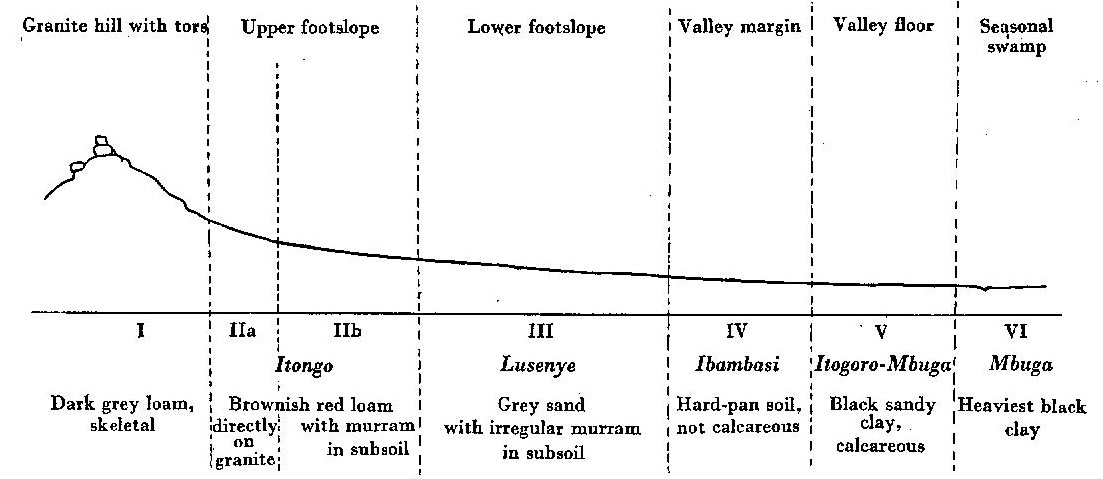
Figure 1: The Ukiriguru Soil Catena (Milne, 1936)
Also in this report, Milne makes several mentions of Vageler’s earlier visits including the following: “From this work of Vageler’s it is clear, and slight acquaintance with the ground confirms, that Ugogo offers an exceptional field for the kind of investigation that is much needed, namely, an experimental semi-intensive soil and vegetation survey of a semi-arid area”.
Milne followed his Tanganyika reconnaissance soils journey with visits to Kenya and Uganda in 1936 and published a Provisional Soil Map of East Africa (see WOSSAC File WOSSAC#42187). In expanding his knowledge of the soils of Tanganyika, Milne had the support and advice of his wife Kathleen who was a geographer, and colleagues with complementary interests. Milne submitted his report as a Government document in 1936, but it was not internationally available until 1947 when it appeared in the Journal of Ecology, Vol. XXXV, Nos. 1 and 2, (see WOSSAC File WOSSAC#131), the final preparation being made by his friend and colleague Clement Gillman. However, the Catena concept had already started to get wider recognition with papers presented at the Third International Congress of Soil Science and a concise 700-word account in Nature in 1936. Following his death, Kathleen gathered up his papers and wrote a detailed account of his life. These documents are now reserved in Rhodes House Library, Oxford.
W.E. Calton (-)
W.E. Calton appears to have been posted to Amani with Milne before 1932 . He is acknowledged as having undertaken ‘much of the analytical work on the soils of the four East African Provinces’ for the Provisional Soil Map published by Milne et al. in 1936. Sometime between 1941 and October 1945, he replaced W.E. Raymond as the Government Chemist in Dar-es-Salaam . It appears that Calton took Milne’s broad interest in the country soils and during his tenure was responsible for most soils work, apart from the Tanganyika Agricultural Corporation Groundnut Projects at Kongwa, Natchingwea and Urambo. In 1949, Calton undertook a reconnaissance soil survey of Zanzibar and Pemba Islands, and like Milne in his description of the Ukiriguru Catena used locally understood names for the soil types. In April 1954, he published An Experimental Pedological Map of Tanganyika based on G. Milne’s 1936 East African Soil Map with revisions in the light of recent work done by C.G.T. Morison, B. Anderson and A.M.M. Spurr and the Staff of the Government Chemists Department. During Calton’s tenure as Chief Scientist, the majority of Tanganyika Research Stations were established. Ukiriguru was first established in 1930 as a Government seed farm and then as an experimental station two years later and in 1939 became the base for the Empire Cotton Growing Corporations activities in Tanzania. Lyamungu and Mlingano were established in 1934 and Ilonga in 1943, and Tengeru in 1959. It seems that these stations with the exception of Ukiriguru did not have a Soil Scientist on staff until after 1956, when the service was reorganised zonally. The main Zone Research Stations were Lyamungu (Coffee), Mlingano (Sisal), Ilonga (Livestock/Horticulture) and Ukiriguru (Cotton). The first Soil Scientist appointed to Ukiriguru was Peter LeMare of the Empire Cotton Growing Corporation in 1952. Later A.M. Kabaara and then John Samki (both Soil Chemists) were stationed at Ukiriguru. Gordon Anderson became the Soil Chemist at Tengeru in 1959. Richard M Baker was stationed at Lyamungu. Later B.N. Patel was at Ilonga and then Ukiriguru. It appears that the Soil Chemists at these stations, with the exception of Gordon Anderson, did not engage in land resource mapping.
M.B. Stent
Stent undertook “A Soil Survey of the Wheat areas in the Northern Province of Tanganyika” sometime between 1942 & 1945 as a report of this was published in 1946 by the East African Research Institute in the Amani Report 1942-45, p. 11-13.
Brian Anderson (1910 - 2003)
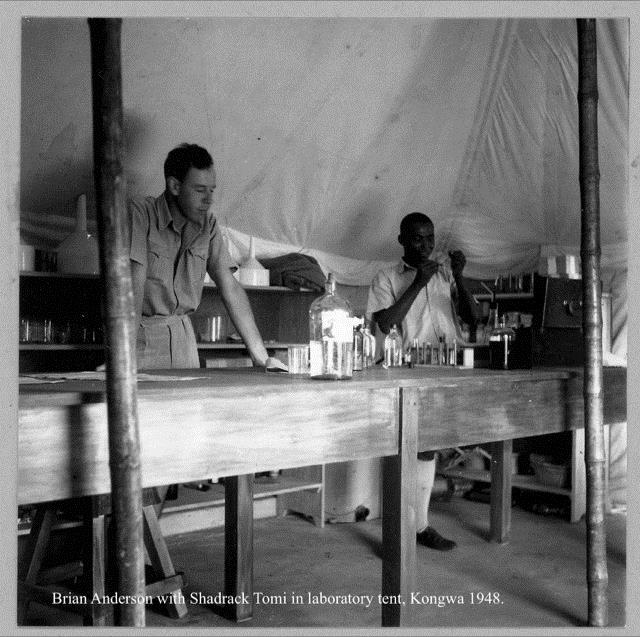
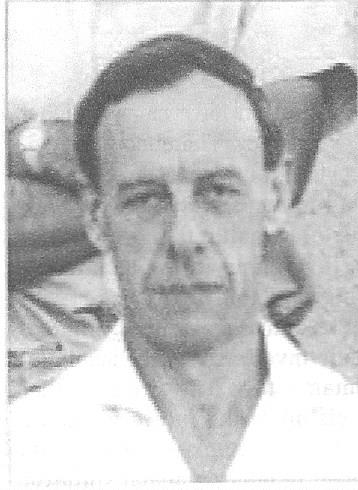
Photos show Brian Anderson, & Brian with Shadrack Tomi in Laboratory Tent. Kongwa 1948
Brian Anderson was posted to Tanganyika in September 1947 as the Analytical Chemist for the Research Section of the Groundnut Scheme to assist Peter LeMare (the project Soil Chemist) with fertiliser experiments. After the Food Corporation received the Charter Report in 1951 confirming that the sites chosen for the Groundnut Scheme were largely unsuitable, he turned his attention to soil survey, starting with surveys of Kongwa (in Central Province) and Natchingwea (in Southern Province), two of the three Ground Nut Scheme areas. His reports of these survey, with four maps of 1:25,000 scale, were published by Reading University in 1957 (see WOSSAC Files WOSSAC#69, WOSSAC#2134, WOSSAC#41464 & WOSSAC#42752) In 1956 he was then seconded to the F.A.O. team undertaking a survey for possible irrigation development in the Kilumbero Valley. The 1960 FAO report contained three of his reconnaissance soil maps (Scale 1:125,000) covering over 3 million acres [approximately 1.215 m ha) on three possible sites (see WOSSAC Files WOSSAC#1532, WOSSAC#42203, WOSSAC#42204, WOSSAC#42205 & WOSSAC#42207). In 1963, he prepared a booklet on the Soils of Tanganyika for use by Agricultural Officers and similar non-scientific staff describing some of the chief soils of the country (see WOSSAC file WOSSAC#36326). Brian was also a Botanist and left a substantial number of plants, gathered from various parts of the country. These were deposited at the Royal Botanic Gardens (at Kew) with replicates at the National Herbarium of Tanzania/Food Corporation Herbarium (Arusha), the Herbarium, Jardin Botanique (at Meise, Belgium), the National Museums of Kenya (in Nairobi) and the Tanzania Forest Division Herbarium (at Lushoto). Brian Anderson left Tanzania in 1962 to join the study of the Niger Delta.
Gordon Anderson (1932 - 2009)
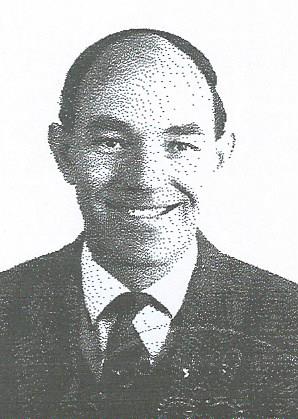
With a PhD in Agricultural Chemistry from King‚s College, Newcastle upon Tyne (then part of University of Durham) Gordon joined the Colonial Service and in November 1958, was posted to Tanganyika Initially he was posted to understudy Brian Anderson on his survey of the Nachingwea area of the Groundnut Scheme. As he had previously gained soil survey experience while undertaking his studies, in April 1959, he commenced a survey of the forested and settled Marimba and Muhenza areas of the Usambara Foothills to assess soil suitability of for increased cocoa production. Completing this in late 1959, he was posted to the Northern Research Centre at Tengeru, Arusha to set up a new soils laboratory. He continued to undertake soil surveys, the main one of which was the semi-detailed survey of the southern and eastern footslopes of Mount Kilimanjaro, but the greater part of his time was spent on soils fertility studies and advising land planning, agricultural, and rangeland officers. In all this, he made a significant contribution to the understanding of the soils and their suitability for various crops in Northeastern Tanzania. In 1964, he researched and prepared the Soil Map of Tanzania that was included in the 1967 Atlas of Tanzania. When the Tengeru research station as taken over by the East African Community in 1968, all the research workers were relocated. At this point Anderson returned to the UK but soon returned to Africa as Readership in Agricultural (Soil) Science at the University of Zambia and then in 1971 moved to the Department of Soil Science and Agricultural Chemistry at Makerere University in Uganda. In 1973 He returned to the UK, where he remained, first working for ADAS involved research into hill land improvement, advisory work with farmers and horticulturalists, and then in 1980 resigned and retired to a farm in the Scottish Borders.
Peter LeMare Profile (1922 - 2018)

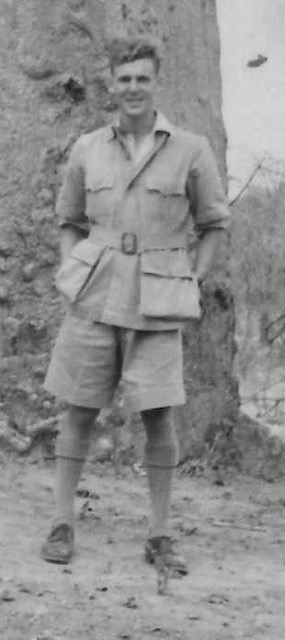
In the final year of his BSc at Birkbeck College, LeMare received a letter from Dr. A.H. Bunting (whom he had known when he previously worked at Rothamsted) saying that he (Bunting) had been appointed Chief Scientific Officer for the Groundnut Scheme in Tanganyika and inquiring whether Peter would be interested in joining him as a soil chemist. That agreed, Peter focused on successfully completing his degree and in October 1947 arrived in Tanganyika and reported to Kongwa where the Scientific Department was based. He was appointed to organise field experiments to measure the needs for fertiliser in the three areas of Tanganyika proposed for the production of groundnuts (he also did a few experiments Northern Rhodesia (now Zambia). He prepared the plans, organized the combinations of fertilizers necessary for each plot, collated and analysed the data for the three regions and wrote annual reports. There were additional chemists or agronomists in each region who looked after the field work although LeMare also did that in each region when no one else was available or extra hands were needed, but this was mainly in Kongwa area. Over 200 field experiments on soil fertility problems in Southern, Central and Western Provinces of Tanganyika were undertaken and the results published in the Empire Journal of Experimental Agriculture in 1959. While this research identified soil fertility limitations in each of the scheme areas, these were not the main factors leading to the abandonment of the Scheme. The main limiting factors were either soil physical and/or other environmental characteristics (e.g. the tendency of the soil to harden when dry making it difficult the harvest the groundnuts, which coupled with the inadequate total and poorly distributed rainfall that severely reduced yields made production uneconomic at Kongwa, Rosette Virus in Western Province and logistical problems in Southern Province. When the Groundnut Scheme closed, LeMare joined the Empire Cotton Growing Corporation (which later was renamed the Cotton Research Corporation) and was posted to their new Research Station at Namalonge, Uganda. However, his terms of reference included that he should spend one quarter of his time at Ukiriguru (in Tanganyika) where ECGC was also engaged in Cotton Research, thus becoming the first Soil Scientist appointed to Ukiriguru. It soon became apparent that a part time chemist was not adequate for the needs of Ukiriguru so A.M. Kabaara, one of the first East African chemistry graduates (London degree from Makerere College), was appointed to work full time at Ukiriguru. In 1963, LeMare took charge of the cotton research team at Ukiriguru and Kabaara moved to Namulonge. In 1969, LeMare resigned from the Cotton Research Corporation (as it was by then known) and returned to the UK. He spent the next three years at Rothamstead continuing his Namulonge research on the unusual reaction superphosphate fertiliser in high manganese soils. He successfully submitted his finding for a PhD at Reading in 1973. From then until his retirement in 1988, he was a member of the Reading Soil Science Department but employed by the UK Government to research soil fertility problems in tropical soils.
Photos show Peter Le Mare in 1947 and 2015
Others (1945 - 1970)
In addition to the above mentioned, a number of other soils scientists have been involved in the study of Tanganyika soils, but spent significantly less time in the country and were mainly engaged in the more detailed soils surveys on smaller areas. The following are the pioneers (those studying the soil resources prior to 1970) of which we are currently aware.
J.W.Vail
Vail was a Soil Chemist under Calton in the Government Chemist Dept. He co-authored a number of papers on nutrient deficiency between 1957 and 1970, but it seems did not undertake any soil classification.
C.G.T. Morison
After working at Rothamsted on the coagulation of clay suspension with calcium compounds, Morison was appointed Demonstration in Agriculture Chemist at Somerville College Oxford in 1909 and promoted to reader in 1923. Then in 1932, Morison was appointed Reader in Soil Science at Oxford. In addition, he undertook soil surveys in Sudan and Tanganyika (see below), Morrison was a founding member and the first President of the British Society of Soil Science when it formed in early 1947. Following his retirement from Oxford in 1948, Morison continued to be professionally involved - for example see
- Morison CGT. (1948) The Soils of Sukumaland, Tanganyika. Journal of Ecology v36, pp 1-84
- Morison, CGT. & Wright, B.I. (1951) The Soils of Sukumaland. Tanganyika Ministry of Agriculture.
P.E. Glover
In 1949, Glover prepared a “Report on the vegetation, soils and ecology of the blocks A, B and C, Southern Province” for the O.F.C. Southern Province. Unpublished. [O.F.C. is the Overseas Food Corporation, so this must be the Nachingwea area of the Groundnut Scheme]
Cecil F Charter
In 1950, C. F. Charter , then Director of Soil and Land Use Surveys in the Gold Coast (Ghana), was invited by the Overseas Food Corporation to do a one-month field survey of the Nachingwea Ground Nut Area. His report “Report on the environmental conditions prevailing in block ’A‚, Southern Province, Tanganyika Territory, with special reference to the large-scale mechanised production of groundnuts” was published in 1958 by the Government Printing Department, Kumasi, Ghana. The critical nature of this report important in the growing realisation of the failure of the Groundnut Scheme and let to Brian Anderson leaving the laboratory and commencing the soil survey of Kongwa and Nachingwea project areas.
Arthur Michael Marshal Spurr (1930-2012)
Arthur Spurr was appointed as a Geologist by the Colonial Government in 1949 and posted to Dodoma. It is not clear when he left Tanganyika but he was back in England by November 1965 . Later he seems to have been in New South Wales and then in England with La Farge Aggregates. Though most of his Tanzania record is that of a Geologist, he undertook a survey of The Soils of Mbozi. This was published in 1954, probably in relation to his involvement in the mapping of the geology of the Mbozi area . Geological Survey Dept. Bulletin No. 24 (1955). Map scale 1:100,000. The report has 13 mapping units plus 6 complexes - broad groupings (e.g. red earths, Mbuga soils, silt loams - and includes profile descriptions and a brief discussion of agricultural potential.
T.W.G. Dames
In 1959, Dames prepared a “Report on the Soils of the Pangani Valley” which was published by F.A.O. Rome. The map scale was 1:100,000. The report includes API and ground survey, mapping units: soil associations on parent material, land use potential, irrigation suitability map showing 6 classes. Profile descriptions and analysis are included.
Adriel M. Kabaara
Adriel M. Kabaara was one of the first Kenyan Chemistry graduates with a London degree from Makerere College, Kampala. He joined the Empire Cotton Growing Corporation (from 1966 the Cotton Research Corporation) about 1956 and was appointed Soil Chemist at Ukiriguru. In 1963, he exchanged places with Peter Le Mare, Peter moving to Ukiriguru and Adriel Kabaara to Namulonge. Later he became the director of the Jacaranda Coffee Research Station near Ruiru, Kenya, and then he held a similar post in Papua New Guinea.
R.M. Scott
In 1963, Scott undertook “A reconnaissance survey of Oljoro Region, Tanganyika, Arusha” which was published in the Development Plan, Phase II, Part I. Map scale was 1: 25,000 and contained nine mapping units. Scott may have been attached to EAFFRO as his had participated earlier is creating a soil map of Kenya. Scott appears to have been based in Kenya at the time for in the same year he completed a survey of the Soils of the Nairobi-Thika-Yatta-Machakos Area of Kenya.
John K. Samki
John, perhaps the first Tanzanian to obtain a degree in Agriculture Science (from New Zealand’s Lincoln University), joined the Government staff at Ukiriguru Research Station but in 1968 moved to the Ministry in Dar-es-Salaam. He later became the Director and Research Co-ordinator, Ministry of Agriculture Agricultural Research Institute at Mlingano. In 1977, he prepared a Provisional Soils Map of Tanzania (Scale 1:2,000,000) which was published by the Tanzanian Geological Survey Department.
T.M. Addiscott (b. 1942)
Tom Addiscott read Chemistry at Oxford, doing the Part ll of the course in the Soil Science Laboratory with Peter Nye. In 1964, he went as a UNA International Service volunteer to Tanzania where he worked under Peter Le Mare at Ukiriguru developing a method for using Schofield’s Phosphate Potential as a means of assessing phosphate availability in Tanzanian soils. The initial development work was done on the sandy Itongo soil of the Ukiriguru catena (see sketch in G. Milne above) and the resulting method was applied to 56 soils from the West and North-West regions of the country, ranging in catenary terms from the reddish sandy Itongo soils to black montmorilloniitic Mbuga or ‘Black Cotton’ soils [ref Addiscott T. M. (1969) E. Afr. Agric. For J. 35, 21-27 & J. Agric. Sci., Camb. 72, 401-403 and LeMare, P.H et al. (1965) Prog. Rep. Exp. Stns West Tanzania 1964-65C.R.C.]
On his return to the UK in 1965, Tom Addiscott worked in both the organizations founded by Sir John Bennet Lawes, spending one year in the Lawes Chemical Company and 36 years at Rothamsted Experimental Station, retiring in 2002. Much of his work involved computer modelling of soil processes, including leaching of nitrate and later phosphate, and mineralization and crop uptake of N. He also took a strong interest in the philosophy and pitfalls of modelling. He published two books and about 150 miscellaneous articles, about half of which were in refereed journals. In 1991, he was awarded the Research Gold Medal of the Royal Agricultural Society of England for his work on the computer prediction of N requirement by crops.
Tom Addiscott retained his interest in East Africa into later life and was active in the charity FARM Africa, going on field trips to Kenya and Tanzania in 1999 and Ethiopia in 2001 and was County Organizer for Hertfordshire from 2005 to 2009.
Vince Souza Machado
After obtaining a Degree in Agriculture from Reading and a DTA from The Imperial College of Tropical Agriculture (Trinidad) Vince Machado joined the Colonial Service and was posted to the Gambia as an Agricultural Officer. When Gambia gained independence in 1964, Machado moved to Tanzania where he was posted to Ukiriguru where until 1966 he was seconded to the Empire Cotton Growing Corporation to work with Peter LeMare on fertilizer trials on cotton in farmers’ fields. He then took the post of Senior Agronomist at the Kawanda Research Station in Uganda where he was involved with an extensive program of fertilizer trials throughout the country on cotton, maize and groundnuts. In 1973, he emigrated to Canada, and after first working with Agriculture Canada registered in the PhD programme at Guelph University. On successful completion of his degree he obtained a faculty position there in the Horticulture Department. He is currently Plant Agriculture Professor Emeritus at Guelph University.
G.A. Stiven
Stiven was the Soil Chemist appointed by the Cotton Research Corporation to follow Peter LeMare in 1969. He left in 1974 when his contract was not renewed.
B.N. Patel
Government Chemist at Ilonga in 1969, transferred to Ukiriguru Research Station.
Robert M. Baker and the 1967-1969 Reconnaissance Soil Survey of Tanzania
Following independence in 1964, the Tanzania Government approached the World Bank for Land Development Loans. However, given the history of large-scale development in Tanzania (e.g. the Groundnut Scheme) the Bank would not lend Tanzania any money until they undertook a countrywide soil survey. The Government approached F.A.O. and other donors for assistance in conducting the survey. F.A.O. agreed to provide a Senior Soil Surveyor and the US Peace Corp agreed to the field personnel. F.A.O. seconded Robert M. Baker, an Australian, who, as Senior Soil Scientist in the Ministry of Agriculture oversaw the project. US Peace Corps recruited four recent soil science graduates along with four other agricultural graduates. These were: Thomas J. Sheehy and Henry S. Green based at Tengeru Agricultural Research Station. Allan E. Tiarks and Robert A. Johnson based at Ilonga Agricultural Research Station. John Reinsborough and Alan R. Wengell based at Ukiriguru Research Station. William Duckworth and George Sturtz based in the Land Planning Office in Mbeya. In August 1968, R. Wayne Borden (a Canadian graduate soil scientist) was seconded to NW team as a replacement for Alan Wengell who had contracted hepatitis, and then stayed on when he recovered to take the place of John Reinsborough who had decided to return home early. The field survey was completed in July 1969 and the Peace Corp field team left Tanzania. Bob Baker then prepared the final report and arranged publication . This came out as a National Government publication in 1970 entitled The Soils of Tanzania. Bob Baker then left Tanzania. Wayne Borden also left in 1970 after completing two further surveys. The WOSSAC Archive contains two of the four field studies that led to the final Soils of Tanzania Report. WOSSAC File WOSSAC#41600 is a draft copy of the NE quadrant draft report and WOSSAC File WOSSAC#41609 is the NW quadrant draft report. WOSSAC has yet to obtain copies of the draft reports for the SE and SW and of the final report.
WOSSAC is grateful to Wayne Borden, Brian Kerr and Dr Ian Baillie for drawing this article together
Citation
If you wish to use this text, please cite as:
